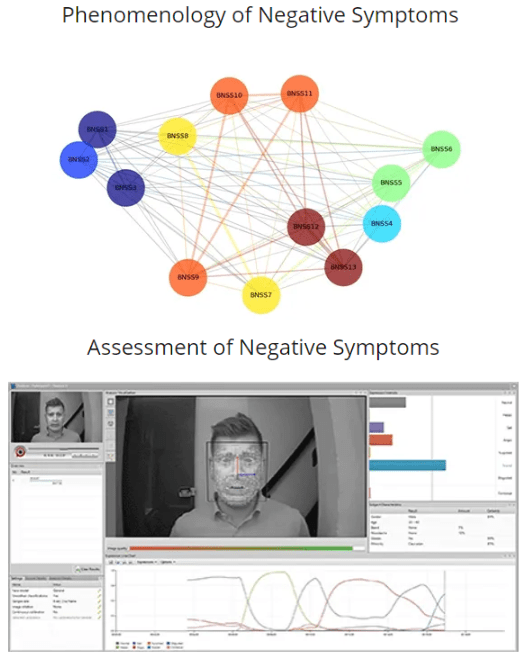Remote Monitoring of Negative Symptoms in Schizophrenia
Reliable and valid scales for assessment of the negative symptoms of Schizophrenia are available. However, they have certain issues that affect their validity, such as recall biases, halo effects, and issues of social desirability as they are usually completed with the clinician. Dr. Strauss’s group wanted to know if digital phenotyping methods could be complementary to the existing scales.
Dr. Strauss and his team used the mEMA platform to prompt participants at various times of day, across different contexts to complete momentary, digital versions of these scales. They also obtained passive digital phenotyping measures, such as geolocation, accelerometry, and ambient sound (VOX) concurrently with the mEMA surveys.
Dr. Strauss and his team found the digital versions to be reliable and psychometrically valid and to have much better resolution both temporally and across contexts. These findings opens the possibility for both enhanced assessment and a digital therapeutics application that would allow patients from all parts of the world to monitor their own symptoms, and let the app prompt them when it’s time to seek additional treatment. Validation of the EMA and passive digital phenotyping approaches may allow for siteless clinical trials in the future.

Modeling Positive Emotion and Anhedonia in Schizophrenia
It has been widely accepted that people with Schizophrenia tend to be anhedonic, that is, that “nothing feels good;” they don’t experience pleasure. However, as it turns out that may be an artifact of the methodologies used to measure emotional experience.
Dr. Strauss’s team wanted to better understand the temporal dynamics of positive emotion around potentially pleasurable experiences in those with Schizophrenia. The team asked their study participants to plan a pleasurable activity each day for one week. They used the mEMA system to prompt the participants to describe their emotional experience leading up to, during, and after the pleasurable events.
Dr.Strauss and his team found that people with Schizophrenia experienced as much pleasure during the activities as the control group participants. The differences were before and after the event. Those with Schizophrenia showed a less steep build up of experienced and anticipated positive emotions before the event and a quicker drop-off of experienced positive emotion after the event. They expected to feel less pleasure and were quicker to forget that they had indeed found the event pleasurable.
With these findings, it is hoped that therapists will be able to use the new understanding to help patients with Schizophrenia experience more pleasure in their daily lives.

Early Identification of Psychosis in Clinical High-Risk Youth
Psychosis is typically preceded by a prodromal (i.e. pre-illness) period characterized by subtle hallucinations and delusions, as well as functional decline. These symptoms can be detected reliably based on clinical interviews; however, these interviews only have modest predictive power and are only accessible to those located in a few locations near academic medical centers.
Dr. Strauss and his team are currently testing the feasibility of using Ecological Momentary Assessment surveys, video recordings, and passive digital phenotyping (geolocation, accelerometry, ambient sound, ambulatory psychophysiology), for enhancing early identification risk prediction algorithms and risk monitoring. The hope is that these technologies, that are widely available on smartphones, will alert clinicians, young people, and their families that there is a need to be seen for in-person clinical services and monitoring.

Gregory Strauss, PhD
Assistant Professor of Psychology and Neuroscience, Director of the Clinical Affective Neuroscience Laboratory, Director of the Georgia Psychiatric Risk Evaluation Program at University of Georgia


